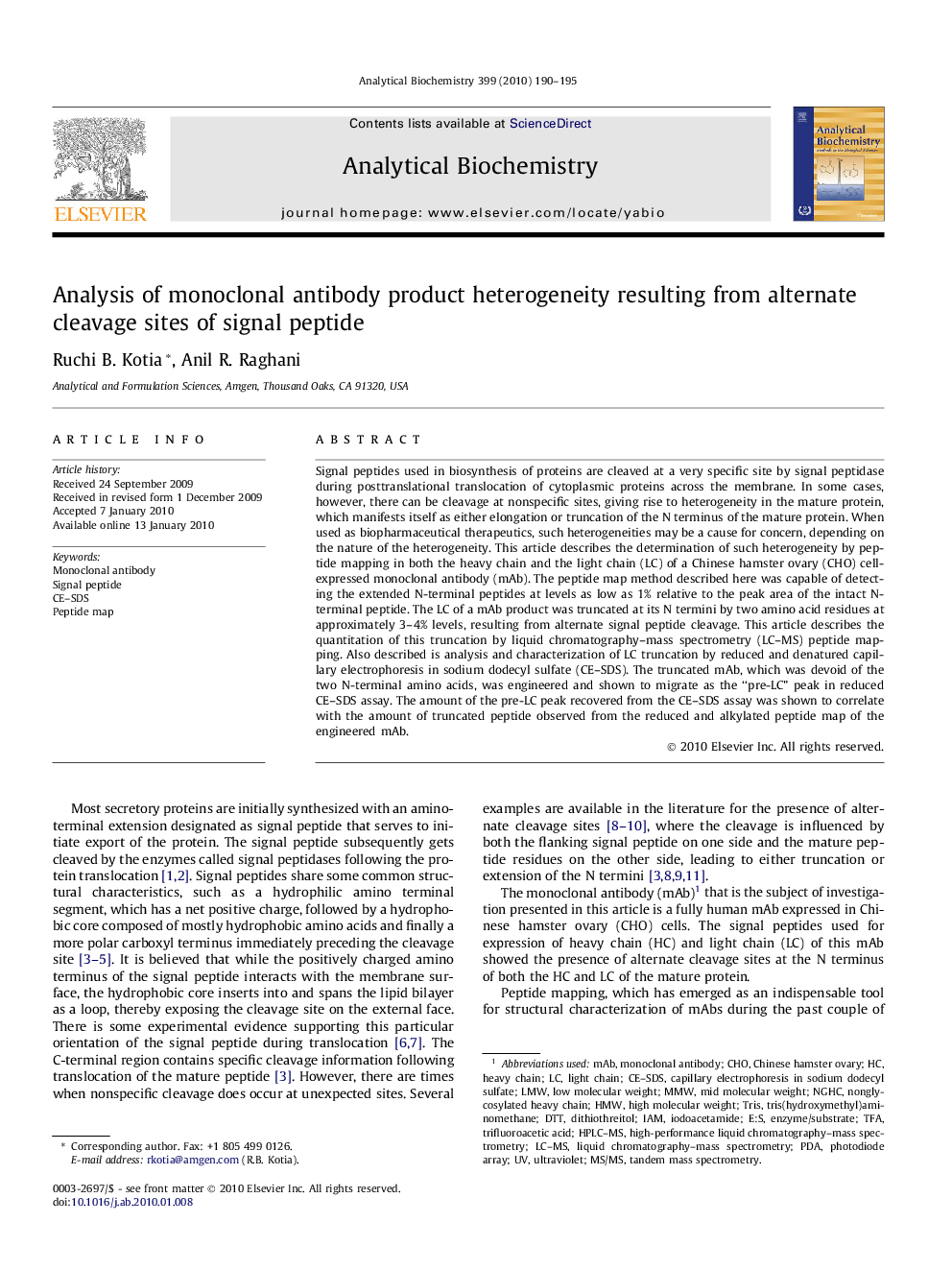| Article ID | Journal | Published Year | Pages | File Type |
|---|---|---|---|---|
| 1175207 | Analytical Biochemistry | 2010 | 6 Pages |
Signal peptides used in biosynthesis of proteins are cleaved at a very specific site by signal peptidase during posttranslational translocation of cytoplasmic proteins across the membrane. In some cases, however, there can be cleavage at nonspecific sites, giving rise to heterogeneity in the mature protein, which manifests itself as either elongation or truncation of the N terminus of the mature protein. When used as biopharmaceutical therapeutics, such heterogeneities may be a cause for concern, depending on the nature of the heterogeneity. This article describes the determination of such heterogeneity by peptide mapping in both the heavy chain and the light chain (LC) of a Chinese hamster ovary (CHO) cell-expressed monoclonal antibody (mAb). The peptide map method described here was capable of detecting the extended N-terminal peptides at levels as low as 1% relative to the peak area of the intact N-terminal peptide. The LC of a mAb product was truncated at its N termini by two amino acid residues at approximately 3–4% levels, resulting from alternate signal peptide cleavage. This article describes the quantitation of this truncation by liquid chromatography–mass spectrometry (LC–MS) peptide mapping. Also described is analysis and characterization of LC truncation by reduced and denatured capillary electrophoresis in sodium dodecyl sulfate (CE–SDS). The truncated mAb, which was devoid of the two N-terminal amino acids, was engineered and shown to migrate as the “pre-LC” peak in reduced CE–SDS assay. The amount of the pre-LC peak recovered from the CE–SDS assay was shown to correlate with the amount of truncated peptide observed from the reduced and alkylated peptide map of the engineered mAb.
